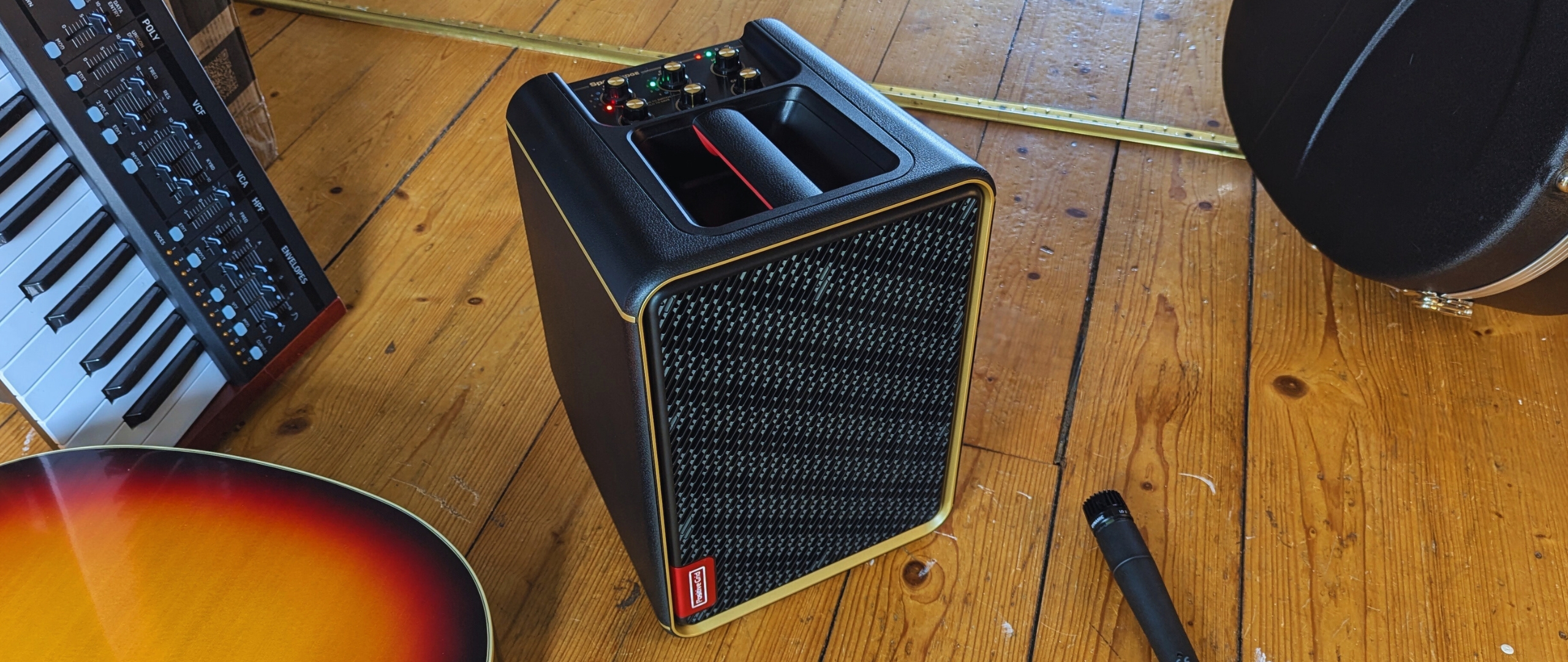MusicRadar Verdict
As with all of Positive Grid's smart amps, the Spark Edge takes a similar route in offering a huge array of sounds, excellent build quality, and flexible connectivity. A great option for singer-songwriters and buskers, although some may be put off by its heavy reliance on a smartphone and app.
Pros
- +
Huge range of great quality sounds.
- +
Very loud for its size.
- +
An easy one-hand carry.
Cons
- -
Relies heavily on the companion app.
- -
A speaker mount would be nice.
MusicRadar's got your back
What is it?
Price: $449/£399/€489
Output: 65W
Channels: 4
Speakers: 1x 6.5" woofer, 1x 1" tweeter
Buy at Positive Grid
We guitarists have certainly been spoiled over the past few months when it comes to new releases, with a boatload of great pedals and guitars to sink our teeth into. Having only just recovered from the launch of the much-awaited Spark 2, there’s another fresh addition to the smart-amp lineup with the all-new Positive Grid Spark Edge.
At first glance it feels very much like a Spark Live-lite, giving you multiple inputs for various instruments, but in a much more compact chassis. It’s got all the typical knobs and styling we’d expect from a Positive Grid amp, leading me to wonder where does Edge sit in the pantheon of PG’s amps, and is there really any need for it?
Well, for years now the gold standard for busking amps has been the Roland Cube Street. You might have seen it in your local town centre or shopping complex, and its reign has been a long and uninterrupted one. Spark Edge is looking to take this crown for itself, giving musicians a more modern option to play out and about. Let's find out if it's got what it takes to come at the king.
Build quality
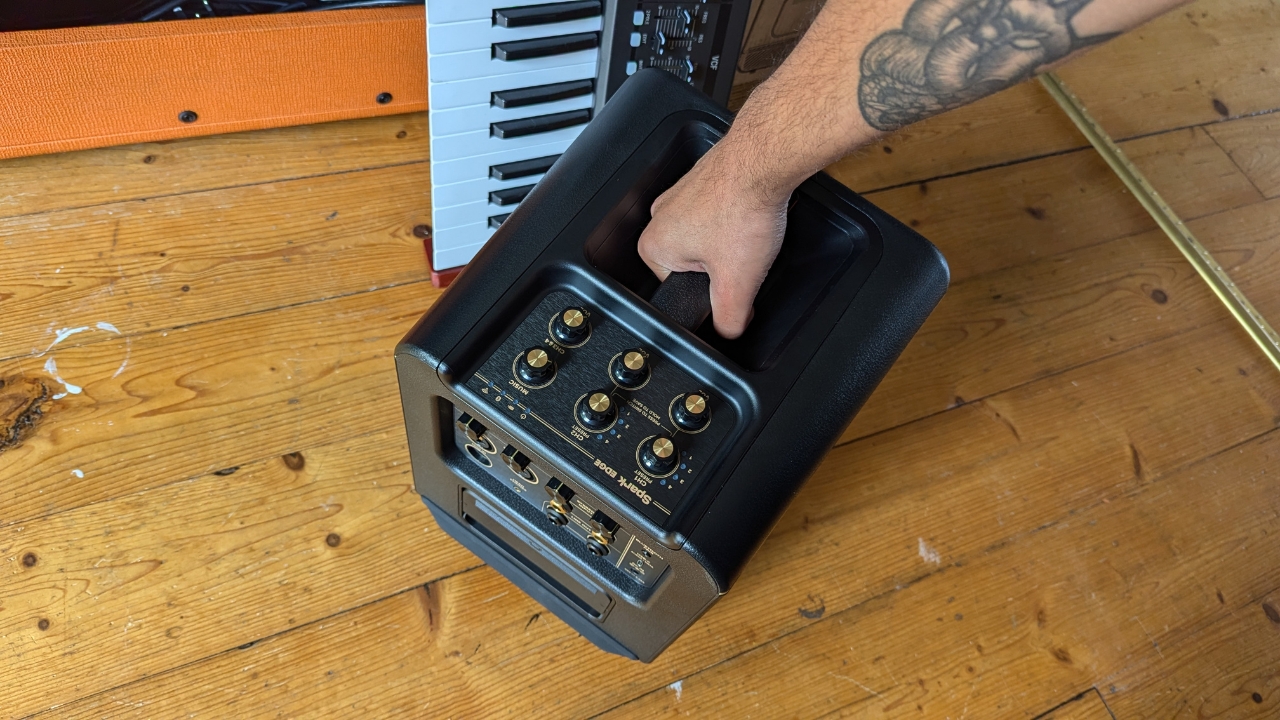
When I unboxed the Spark Edge my first impression was how lightweight it is. Pulling it out of the box is a breeze with the top-mounted handle and I could definitely see people carrying it in one hand with their guitar in the other or on their back. No dolly required.
It still feels sturdy though despite the relatively light weight and I can see it putting up with getting chucked in the back of a van or carried on public transport without anything other than cosmetic damage. The styling is PG through and through, with a black outer shell, gold trim, and some subtle red accents on the front grille and carrying handle.
It funnels outwards slightly from the back to the front and the grille is a hard plastic rather than the normal speaker cloth you'd typically find on an amp. It gives it a more rugged look than that of the Spark Live, clearly designed for being out and about in all conditions. The bottom edge of the back is slanted so you can tilt it upwards for better monitoring or just to help the volume carry further and I'm not sure if PG recommends it or not, but it worked fine for us laid on its side too.
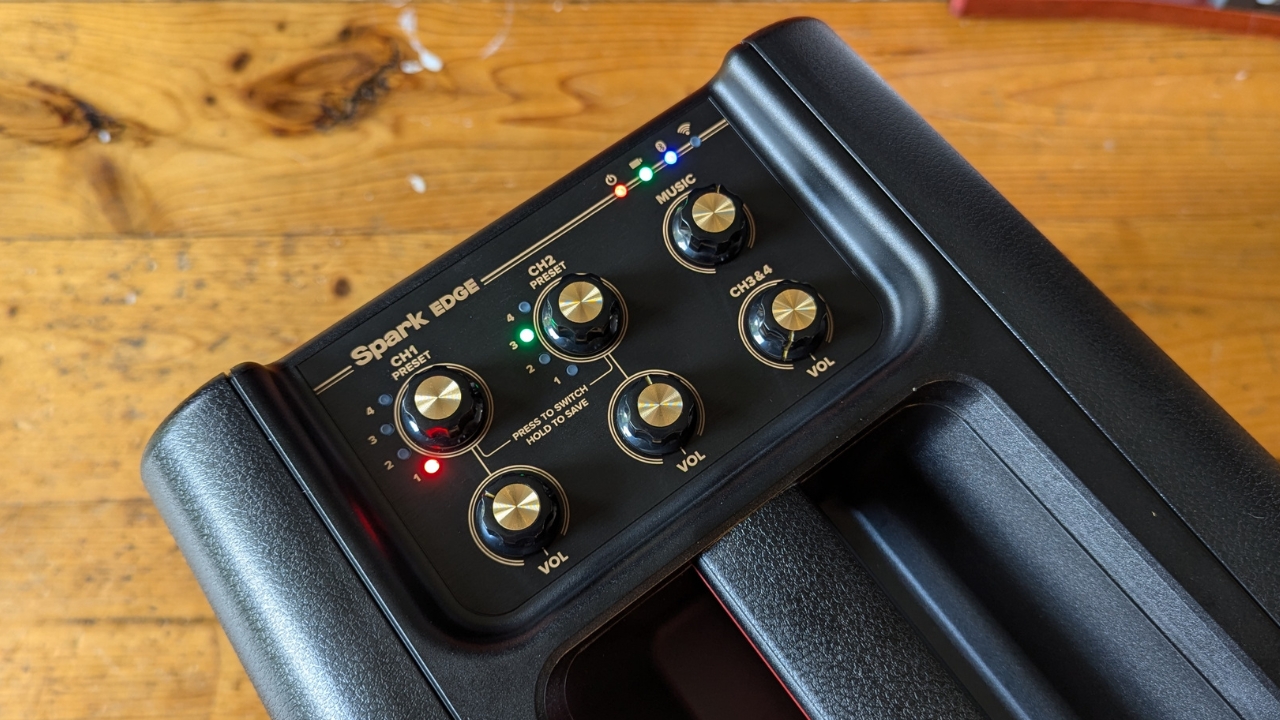
The top panel will look familiar to anyone who’s used a Positive Grid amp before, featuring six rotary knobs that change presets on channels 1 and 2 with master volume knobs for each channel below. On the right-hand side, you’ve got further volume controls for any music piped through via Bluetooth or auxiliary cables, and a master volume for channels 3 and 4.
Want all the hottest music and gear news, reviews, deals, features and more, direct to your inbox? Sign up here.
The back of Edge is where you’ll find a plethora of inputs with combi XLR and 1/4-inch inputs for channels 1 and 2, plus two 1/4-inch inputs for channels 3 and 4 which can be used as stereo inputs. Below that you get a MIDI in, headphones out, two 1/4/-inch line outs with master volume, and three EQ knobs above. To the right-hand side, you have a power button, Bluetooth button, USB-C input, and a DC in for charging the optional battery.
Just like all of PG’s stable of guitar amps, it uses the Spark App for its main control. It also gives you access to the brand-new Spark Looper and the Spark AI tone generation tool, which will be great for buskers to play along to grooves, and those that might take requests looking for a quick guitar tone.
Usability
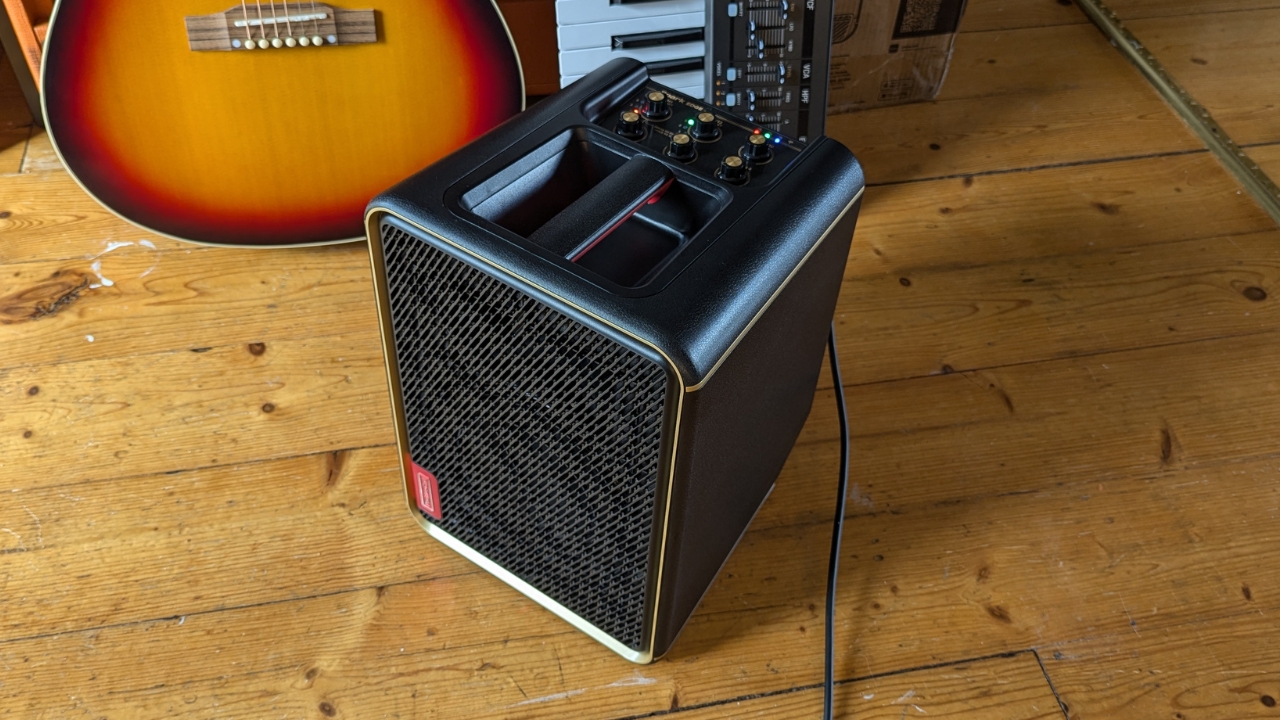
If you ever used a Positive Grid product before, you’ll be well at home with the Spark Edge. Even if you haven’t, everything is labelled clearly enough that you won’t need a deep dive into the manual to get up and running. It’s exactly the approach I took while testing.
It’s definitely usable this way, but like most of PG’s stable, Spark Edge really lives and dies via the app. If you’re not the sort who likes to stay attached to your smartphone, then you may find something a little less techy works better for you out on the road. You will need to use the app to get the very best out of this guitar amp slash PA system.
Out of the box it’s set to have guitar presets on channel 1 and vocal presets on channel 2, perfect for buskers and singer-songwriters. These aren’t interchangeable though, with only some of the presets for bass, acoustic, and mic appearing on the channel 1 list.
You can’t select guitar presets from channel 2 either, so you have to commit to having it set up this way. You can save eight separate settings on each channel however, which should give you plenty of flexibility for a specific setlist and make it easy to dial in song-specific effects on either your vocal or guitar.
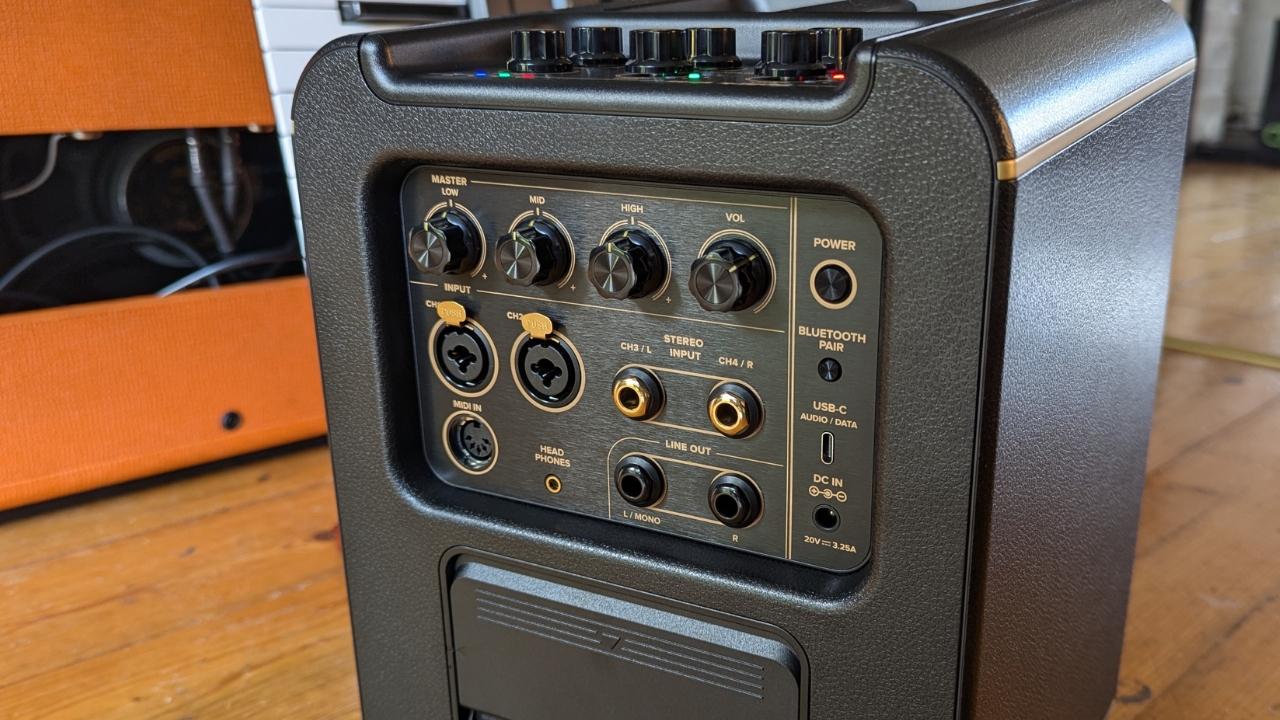
Getting my smartphone out and connecting Spark Edge to the app via Bluetooth didn't take long, and doing so opens up a wealth of options for tweaking sounds. Whether it’s selecting a guitar amp, sculpting the preamp for your vocals, or adding a chorus pedal to your bass guitar tone, there’s huge array of sounds to choose from, and plenty of options to adjust them in fine detail.
The app also includes PG’s new Spark AI feature, which could prove very handy for those impromptu song requests. Just type a few words or a sentence and it’ll spit back a selection of tones for your consideration. Some of these work really well, others, not so much. Like much of this burgeoning world of AI, you’ll need to learn how to properly speak to it to get the best out of it.
Spark Edge also features access to the much-lauded Spark Looper, which allows you to create loops using your smartphone and instrument. I can imagine that any serious performer would want to use a footswitch for this task, and although I didn’t have one to hand to test, you can use the Spark Footswitch X with the Spark Edge to control your loops with your feet, although you'll have to fork out extra for the privilege.
Positive Grid provided a battery with our review sample, and I can report that the battery life is excellent. After initially charging it I didn't need to charge it once during my entire testing, and I easily spent over seven hours putting it through its paces. Whether that was using instruments or streaming music via Bluetooth. Impressive. The battery is $79 extra though, and for an amp designed for busking, it really is an essential purchase so you'll need to factor that into the cost.
Sounds
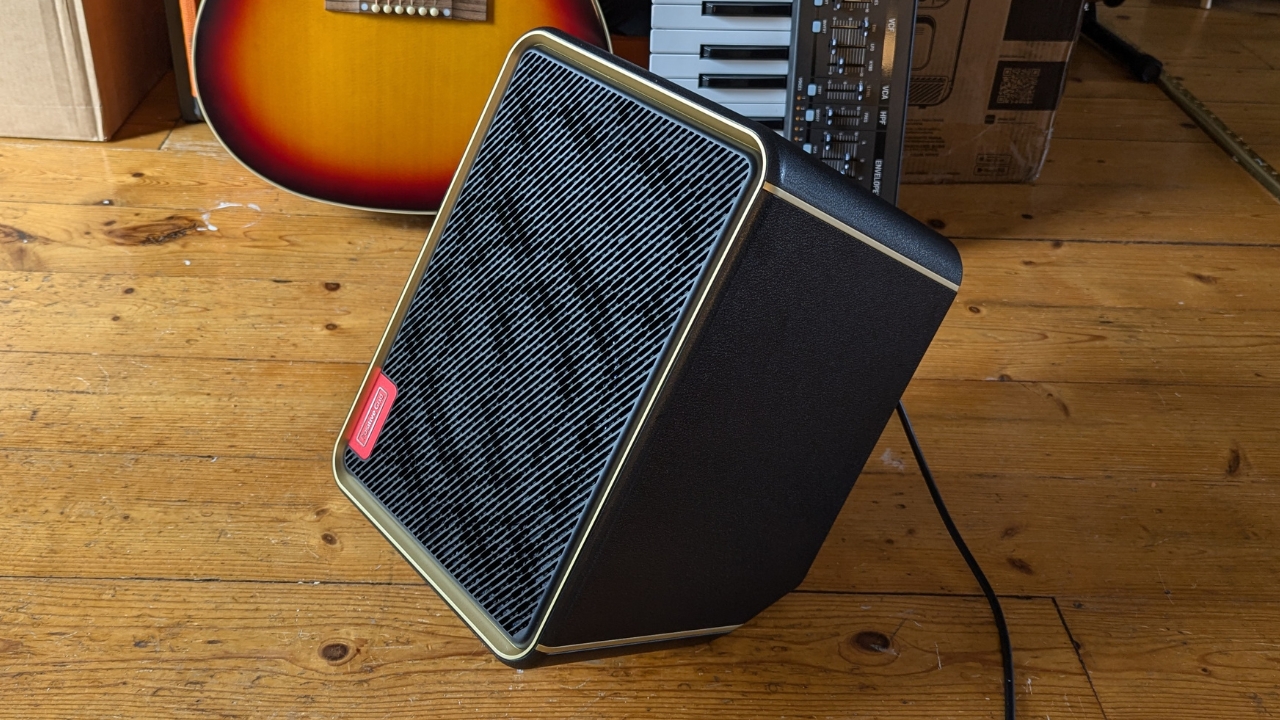
Disregarding the app initially, I plugged my acoustic guitar and microphone in to do my best busking impression. Finding the cleanest tone I could I strummed my acoustic and was met with a surprisingly big sound from such a small-looking speaker. Tilting it back onto its angled edge, it’s perfect for use as a monitor, and the spread of sound travels much further this way. It was pretty boomy though on default settings, and I found myself reaching for the master bass EQ knob on the back to prevent my acoustic from feeding back.
With an acoustic guitar and dynamic microphone plugged in, it’s really easy to dial in a nicely balanced mix with just the knobs on top of the amp. It feels like there’s plenty of room for each instrument despite the Edge just having a single speaker, and it really allows each instrument to shine. Separate preset knobs for each channel make dialing in a nice mix a breeze, as well as giving you options for some more esoteric vocal tones.
Next up I tried out a Gretsch semi-hollow guitar, utilising the app to delve into some of the more effected clean tones and mid-gain stuff. It’s not quite as nice sounding as the Spark 2, but then it’s not really trying to be the ultimate guitar amp either. The sounds are plenty good enough for live performances and practice if you prefer an electric, every bit as usable as the other amp sounds I’ve encountered from PG. Utilizing the stereo ins on channels 3 and 4 also makes it really good as a monitor speaker for an amp modeller if you want something compact yet powerful.
Verdict
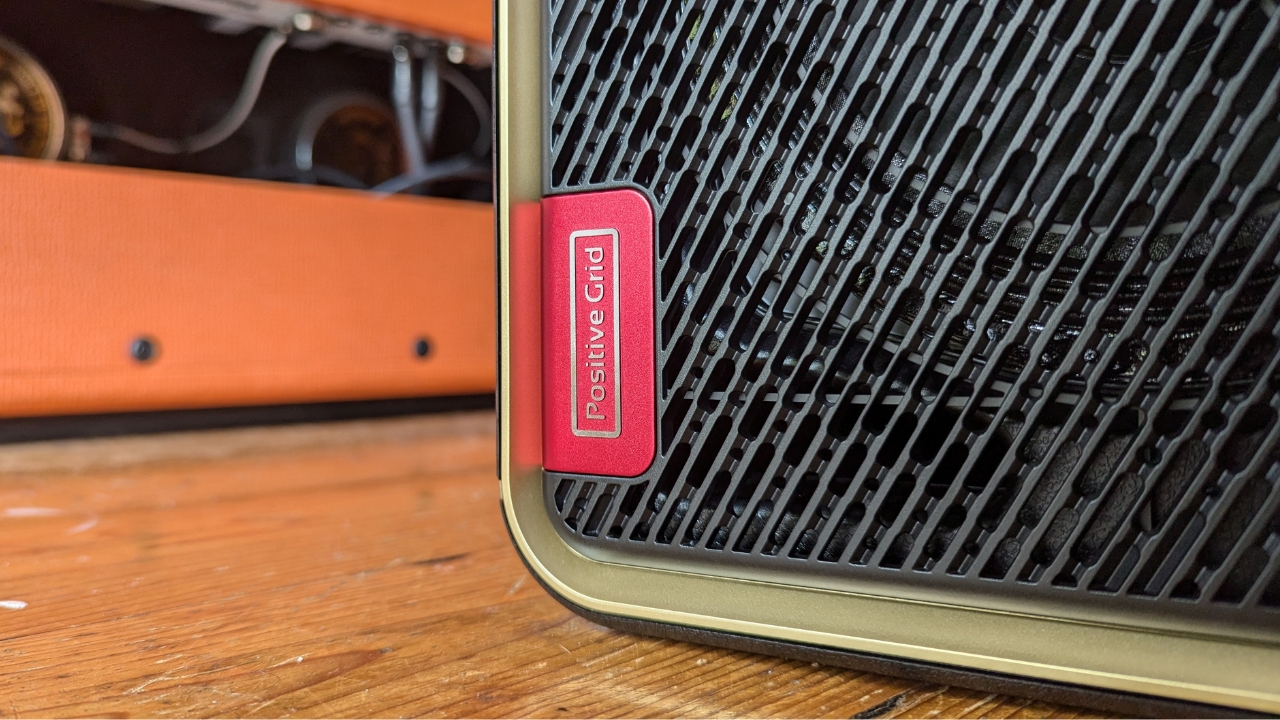
Spark Edge feels like a little bit of an outlier in the full PG amp range to me, less geared towards live use than the aforementioned Spark Live, too large to use as a practice amp like the Spark Mini, yet too small to work as a full-fledged guitar amp like the Spark 2. It's aimed at younger, busking musicians, solo guitarists or duos who want something they can easily carry with one hand.
Busking is a smaller niche in the guitar world, but the Positive Grid Spark Edge definitely fills it with quality sound, volume on tap, and plenty of flexibility. Considering there aren’t a million busking amps on the market at the moment, it's the only real competitor to the much more established Roland Cube. With many more sounds to choose from, Spark Edge could well end up becoming the preference for modern musicians performing live.
Specs
- Price: $449/£399/€489
- Type: 4-channel smart amp and PA system
- Output: 65 watts
- Speakers: 1x 6.5 inch Custom Designed Woofer, 1x 1 inch Custom Designed Horn Tweeter
- Controls: Top panel: ch1 preset, ch2 preset, ch1 volume, ch2 volume, music, master volume
- Rear panel: Master: Low, mid, high, volume. Power, Bluetooth pair
- Onboard effects: Yes
- Sockets: 2x combi XLR 1/4-inch inputs, 2x 1/4-inch inputs, MIDI in, 2x 1/4-inch line outs, 1/8-inch headphone out, USB-C
- Weight: 6.2 kg, 13.66 lb
- Buy at: Positive Grid

Matt is a Junior Deals Writer here at MusicRadar. He regularly tests and reviews music gear with a focus on audio interfaces, studio headphones, studio monitors, and pretty much anything else recording-related. Matt worked in music retail for 5 years at Dawsons Music and Northwest Guitars and has written for various music sites including Guitar World, Guitar Player, Guitar.com, Ultimate Guitar, and Thomann’s t.blog. A regularly gigging guitarist with over 20 years of experience playing live and producing bands, he's also an alumnus of Spirit Studios, where he studied studio engineering and music production.
